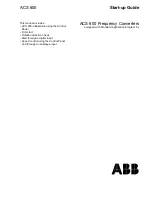
User Manual of DS-6600 Audio/Video Encoder
10
Support encoding at 4CIF, 2CIF, CIF and QCIF resolutions;
Dual stream encoding;
Either compound streams encoding or video stream encoding selectable; audio and video synchronization during
compound streams encoding.
Recording
Multiple Recording Periods Configurable
Up to 8 recording periods can be configured for each day, with different recording type selectable for each
recording period.
Cycle Recording
Either cycle recording or non-cycle recording mode is configurable. In cycle recording mode, the earliest recoding
will be overwritten when the HDD is full; and in non-cycle recording mode, the system will stop recording and
give alert when HDD is full.
Scheduled & Event Recording
Each channel can be set with the scheduled recording and event recording separately, with separate resolution, bit
rate, frame rate and stream type configurable.
Multiple Record Triggering Modes
Scheduled recording;
Motion detection recording;
Alarm recording;
Motion detection/alarm recording;
Motion detection & alarm recording;
Manual recording.
Pre-recoding and Post-recording
Support pre-recoding and post-recoding, with the recording time configurable: 0-30sec for pre-recording and
5-600sec for post-recording;
Record Files Lock & Unlock
User may lock/unlock the record files, and the locked record files will not be overwritten in cycle-recording mode.
HDD Group Management
HDD Property Settings
The HDD can be set to read/write, read-only or redundancy properties;
When the HDD is set to read-only, it allows search and playback of record files only, and no data can be written
into the disk, including record and log;
When the HDD is set to redundancy, it must be used with the read/write disk for real-time backup of important
record data.
Network
One 10M/100Mbps self-adaptive UTP Ethernet interface;
IPv6 is supported.
TCP/IP protocol, PPPoE, DHCP, DNS, DDNS, NTP, SADP, SMTP, SNMP, NFS, and iSCSI are supported.
TCP and UDP for unicast.
Automatically get IP address by DHCP protocol;
Two-way audio and single-directional broadcasting;
Transmission via RS-232 and RS-485 transparent channels;
Access to Internet by PPPoE method, and support Peanut Hull, Dyndns, NO-IP, etc.;
Set time by NTP;












































